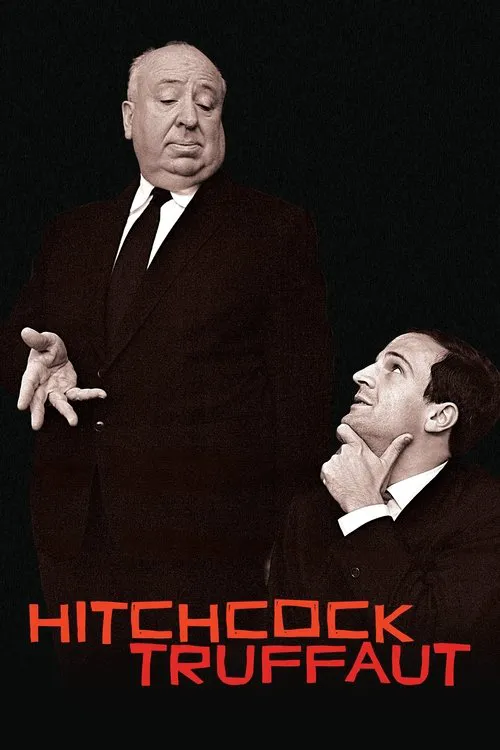Hitchcock/Truffaut

Plot
Alfred Hitchcock, the legendary master of suspense, revolutionized the world of cinema with his unparalleled skill and innovative storytelling. His influence on the film industry is immeasurable, and his legacy continues to fascinate audiences and filmmakers alike. It is against this backdrop that the book "Hitchcock/Truffaut" ("Le cinéma selon Hitchcock") was written by François Truffaut, one of the most iconic French New Wave directors, and published in 1966. The book itself became a defining moment in film history, offering a unique perspective on Hitchcock's craft and providing insights into the creative process of a cinematic genius. Directed by Kent Jones, Hitchcock/Truffaut is a documentary that serves as a companion piece to the book. The film takes the audience on a fascinating journey into the world of Hitchcock, as a selection of filmmakers – including David Fincher, Martin Scorsese, Tilda Swinton, and Richard Linklater – gather to discuss and debate the legacy of the master. The documentary is structured around a framework of questions posed by François Truffaut in his book, which has become a seminal work on Hitchcock's theory and technique. The documentary begins with a brief overview of Hitchcock's early life, his humble beginnings as a title card painter in London, and his early forays into the film industry. The filmmakers then delve into the core principles that defined Hitchcock's approach to storytelling, such as his emphasis on plot, suspense, and the importance of visual storytelling. They examine his use of cinematic techniques, including montage, shot composition, and camera angles, all of which helped to create a unique visual language that captivated audiences worldwide. Through a series of interviews and debates, the filmmakers reveal the intricate web of influences that shaped Hitchcock's work. From the German Expressionists to the French New Wave, Hitchcock drew inspiration from a wide range of artistic and cinematic traditions. The documentary highlights the way in which Hitchcock adapted these influences to create a distinctive style that was both innovative and universally recognizable. One of the key aspects of Hitchcock's approach was his focus on the relationship between the director and the audience. He believed that the audience should be aware of the tricks and techniques being used to create the illusion on screen. This, he argued, would make them more engaged and receptive to the story. This relationship, the documentary suggests, was a fundamental aspect of Hitchcock's art. The book "Hitchcock/Truffaut" offers a unique perspective on Hitchcock's life and work, drawing on extensive interviews with the master himself. Truffaut, who had grown up idolizing Hitchcock's work, saw it as an opportunity to delve deeper into the director's creative process and to explore the underlying principles of his art. The book, which was first published in French in 1966 and translated into several languages in the following years, has become a seminal work on Hitchcock, one that has inspired countless filmmakers and scholars to examine his life and work in greater depth. One of the key insights offered by Hitchcock/Truffaut is the importance of the director's own personal experiences and emotions in shaping the story. Hitchcock, it turns out, was not just a detached observer, but an intensely personal and emotionally invested creative force. His own childhood fears, anxieties, and desires found expression in his films, which were often thinly veiled autobiographical accounts of his own life. As the documentary progresses, the filmmakers move on to a detailed analysis of specific Hitchcock films, examining the way in which he used suspense, visual composition, and plot twists to create a sense of tension and release. They explore the way in which Hitchcock's use of cinematic techniques, such as camera angles and montage, helped to shape the narrative and create a sense of drama. The discussion of specific Hitchcock films highlights the director's mastery of the medium. His use of shadows and light, in films like "Rear Window" and "Psycho," creates a sense of foreboding and unease that draws the audience in. His iconic use of visual motifs, such as the long corridor in "Psycho" and the maze in "Frenzy," has become a hallmark of his style. The documentary also explores the way in which Hitchcock's films responded to the social and cultural context in which they were made. His films, they argue, offer a profound commentary on the human condition, one that continues to resonate with audiences today. The filmmakers who contribute to Hitchcock/Truffaut bring their own unique perspectives to the discussion, drawing on their own experiences and inspirations. David Fincher, for example, speaks about the way in which Hitchcock's use of tension and suspense inspired his own approach to directing films like "Seven" and "Gone Girl." Martin Scorsese, meanwhile, highlights the way in which Hitchcock's use of camera angles and composition has influenced his own visual style, as seen in films like "Taxi Driver" and "Raging Bull." Tilda Swinton and Richard Linklater, among others, share their own thoughts on the enduring legacy of Hitchcock, highlighting his influence on contemporary filmmakers. The documentary concludes with a discussion of the ways in which Hitchcock's legacy continues to shape the film industry today. His influence, the filmmakers argue, can be seen in films from all over the world, films that bear the unmistakable imprint of his unique style and approach. In the end, Hitchcock/Truffaut is a film that celebrates the creative genius of Alfred Hitchcock and the enduring power of his art. Through its engaging discussions and insightful analysis, the documentary offers a fascinating glimpse into the world of the master, one that will inspire and delight audiences for years to come.
Reviews
Recommendations



